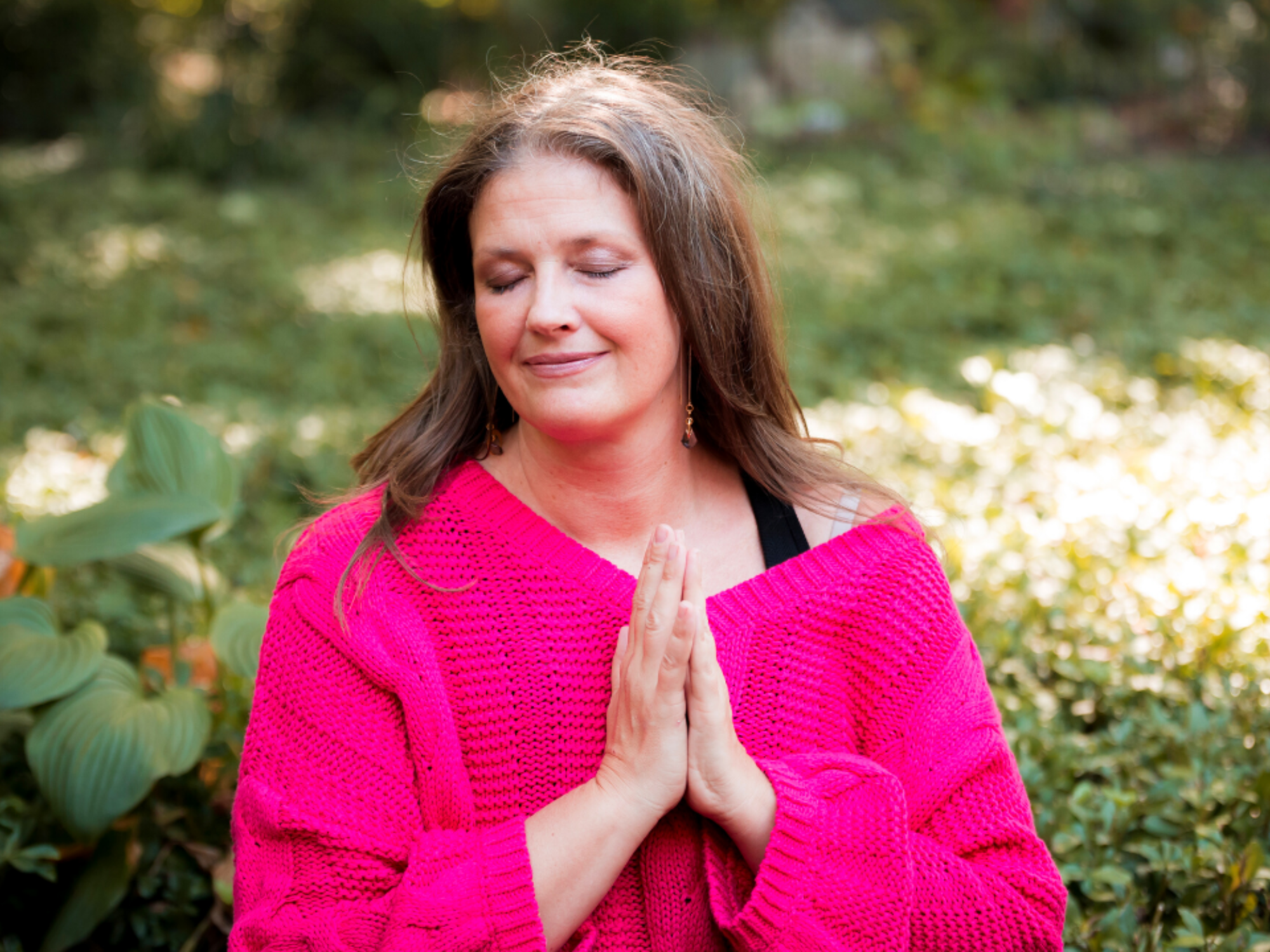
Why Yoga & The Moon?
Lunar Awareness practice helps the yogini (female yoga student) to connect to higher awareness. Our lives are significantly impacted by technology and de-sensitized environments from screen use, temperature control, transportation, and sterilization. With the demands for perfection in our food, the disconnection from our food by the plastic barrier, our bodies needing to LOOK a certain way, we lose touch with the feeling mind and body.
Lady Luna has been our guide since the beginning of mankind. Ever present, she ebbs and flows with the tidal rhythms that our bodies are synced to. It would be silly to think that we have to update and sync our devices, but we do not need that same download time with mother nature. Most of the names from our solar system have Greek or Roman names.
The word Luna is Latin for the Moon but was also referred to as a goddess in mythology synonymous with Artemis, Diana, or Selene. The Moon has been associated with women, goddesses, and femininity for an indefinite amount of time because the female menstrual cycles can coincide with the Moon's phases. If you have ever charted your cycle, you may notice you are on a new moon or full moon cycle.
Menses meaning month in Latin was a part of 16th-century nomenclature describing blood flow that flowed from a women's body each month. "The word "moon" can be traced back to Old English, where it is said to have derived from the Proto-Germanic word "menon," which in turn derived from the Proto-Indo-European "*menses," meaning "month, moon." This highlights how far back the association between the Moon and the passage of time goes." (todayifoundout.com, n.d.).
Within modern yoga practice, women were the receivers of centuries-old practices passed down from mostly males in India. It was not until the 1940s when Eugenie Peterson, later taking Indra Devi's name, approached the "father" of modern yoga, Krishnamacharya, to take her on as a student. Before then, the practice was passed down from man to man. Women need to note this because the practice of asana was highly connected to Indian wrestling or gymnastics.
Women, Yoga & The Moon
While the health and vigor achieved through many of the asanas, some of these asanas' physical demands are really not so female-friendly. One example is the old tradition of beginning in Tadasana (mountain pose) with the feet together. Women's hips are wider than men's. Think childbirth necessity, so simply standing with the feet hip-width has become a normal offering in asana classes. After teaching for over fifteen years, I can safely say, 80-90% of the students I have trained and taught were women. Surya Namaskara A & B's standard sequence in the popular Ashtanga Vinyasa yoga sequence seemed to have originated from classical male-oriented Indian Gymnastics.
This sequence makes demands the shoulders and upper body, which can be too tasking on female shoulders, so we modify by dropping the knees and taking the time to cultivate that strength needed to practice a slow lowering from high plank, to the hovering in-between plank and the floor. Is it necessary we do this? NO! There are plenty of other options in yoga that will safely strengthen our shoulders and core. Our yoga practice can be what we want it to be, some days we are the tigress stalking our prey through the jungle, other days we are the quiet butterfly fluttering and flying, others a playful dolphin. The rules of yoga really lie in the mind, seek truth, release self-absorption for self-realization, whether you are male or female.
Iyengar yoga was the first time I was ever offered menstrual modifications for asanas. I had never even considered that might be important. I always had relatively calm menstrual cycles, but after children found that my girlfriends' complaints were justifiable: cramps, back pain, fatigue, constipation or stomach ache, and of course, moodiness. I discovered that yoga could soothe my menstruation issues, something I really had not experienced before having children. I also understood that the yoga practice I had before childbirth was not healthy for me. I had to modify many things about my practice, especially in the lower back, sacrum, knees, and feet. I injured myself many times with crazy workouts and vigorous practice after having two humongous babies natural. Needless to say, we must understand modification and timeliness in our practice of yoga.
I listened to a wise teacher who once said, if you are tired, then take a nap, don't force your practice, or push yourself. If your body needs sleep, give it sleep, even just fifteen minutes, and then try again. I liked this. This offering was from Geeta Iyengar, Mr. Iyengar's daughter. I had always thought, push, push, push, it is the American way, not just in yoga but in life. Now, I understand the true aspect of Ahimsa and Satya. By practicing what my body needs are, I treat it kindly. By being honest with myself, I practice Satya.
Before my yoga training, I was already a moon goddess child, studying earth-based and spiritual paths. With my study background in Art History and European art, I was deeply inspired by the lunar phases and goddesses. I understood the full Moon's symbolism and was familiar with the esbats or days of honor for full and new moon cycles. I paid attention to the seasonal influence of the lunar rhythm. I had my personal devotional practices of beginning new ideas and initiating changes during the new moons and celebrating the fruition, wildness, and accomplishments of the full moons.
It was not until after childbirth that I truly felt the power of the lunar rhythm within me and the impact of how I could translate that through movement and mediation practice for myself and my students. Offering prompts of self-awareness and introspection for the lunar phase, season, and symbolism was a delight to my students. I saw them move so naturally with the sequences I designed to tap them into their primitive roots. To honor their liberation and freedom of soul and self to express themselves. All they had to do was to consider what I was offering and make it their own.

The Moon has her symbolism of fertility, water, emotion, tidal rhythm, fullness, void, shadow work all rolled into one, among many other things. Sometimes we would pull an oracle card, sometimes they would write little intentions on slips of paper and toss them into a pile to be burned later; other times I would have them fiercely speak out loud that they loved themselves. It all depended on the element or energy we were working with. One can see the psychology and spiritual connection in all this if they allow it. In closing, the lunar aspect of yoga, women, and the Moon comes to giving the space to channel our right to primitive connection, old ways of the wise women, and just to feel ourselves again. The approach is really in the hands of the yogini.
Examples of Lunar Asanas
Waxing Moon to Full Moon Phase
- Malasana or yogic squats – any variation with Chanting
- Savasana – any variation at the full moon to restore from the energy it took to get to that fullness
- Seated Hip Releasing Asanas at the three days of the moon's fullness
- Chandra Namaskara
- Front Body Releasing – quad opening, backbends from the hands and knees to celebrate the fullness of the heart
- Big Balancing Asanas to ignite the fire of change
- Standing Asanas with boldness, fierceness, and heart opening
Waning Moon to New Moon
- Seated Meditation with Nadi Shodanum Pranayama
- So Hum Mantra within breath practice to bring forth stillness and calm
- Forward Bends to go into the void and explore our shadow tensions
- Twisting to release the flow of change
- Standing asanas done with presence and patience
- Balancing asanas on the head and shoulders, or stabilization such as
- Vrksasana - Tree Pose
- Prone asanas to invite quiet and tranquility – Makrasana (crocidile), Bekasana (Frog), Bhujangasana (Cobra) with support
I would love to hear your lunar comments below, how do you celebrate lunar influence in your life?
Learn more about my lunar practices at www.womenyogamoon.com











